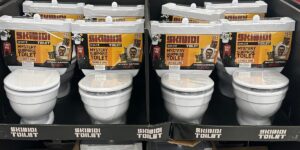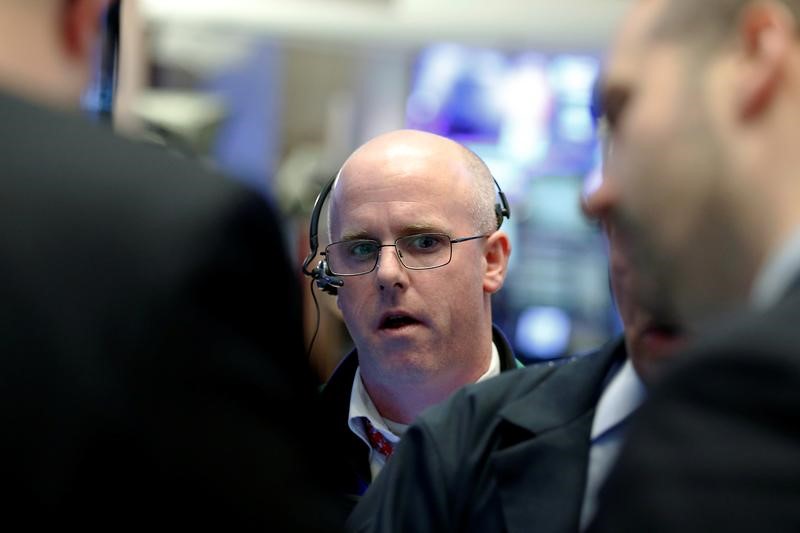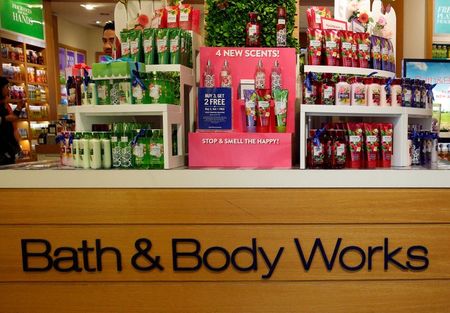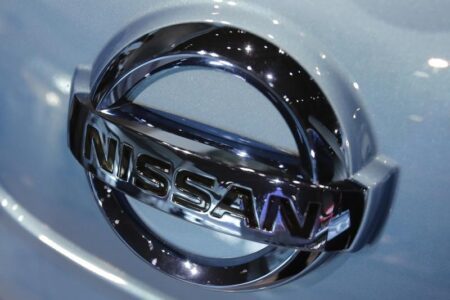Perma-Fix Environmental Services, Inc. (NASDAQ: PESI) reported a challenging second quarter in 2024, with total revenue from continuing operations falling to $14.0 million, a significant decrease from the previous year. The company faced headwinds due to government delays in waste shipments and new contracts, along with an equipment failure at one of its facilities.
Despite these setbacks, Perma-Fix anticipates improvement in the latter half of the year, expecting to see increased revenues and productivity. They are progressing with various growth initiatives, including the deployment of their innovative PFAS technology, and foresee significant opportunities in the years to come.
Key Takeaways
- Perma-Fix experienced a revenue decline in Q2 2024, with total earnings from continuing operations at $14.0 million.
- The company faced delays in government waste shipments and new contracts, as well as an equipment failure that impacted revenue.
- Perma-Fix is focusing on growth initiatives such as new service procurements, international waste programs, and PFAS technology.
- They have over $18.1 million in cash and are confident in their financial positioning for future opportunities.
- The company expects to play a major role in treating waste, with a potential revenue stream of 1.5 million gallons per year.
- Capital expenditures for facility upgrades and PFAS technology deployment are estimated to be around $11 million.
Company Outlook
- Anticipated revenue increase and productivity improvements in the second half of the year.
- The company is aiming for breakeven or better in the current quarter.
- Confident in the demand for PFAS technology and considering potential licensing opportunities.
- Expecting a pickup in backlog and bidding activities in the third quarter.
Bearish Highlights
- Government delays and equipment failure led to a revenue shortfall.
- The company is cautious about the revenue projections for the PFAS unit in Q4, estimating around $1 million.
Bullish Highlights
- Significant opportunities identified for 2025 and beyond.
- Development of a unique sealed chemical destruction unit for PFAS.
- Achieved high PFAS destruction levels in testing, with interest from over a dozen clients, including the federal government.
- Preparation for increased waste volumes at the Richland plant.
Misses
- A June equipment failure resulted in a revenue loss of $500,000 to $700,000.
- Repair costs for the equipment were approximately $100,000.
Q&A Highlights
- Mark Duff discussed financial performance, progress of PFAS installation, and potential licensing.
- The status of the OSMS project remains uncertain, but the company is pursuing opportunities in Central Europe and North America.
- The company is part of the Hanford Tank Disposition Alliance and is unaffected by the ITDC contract outcome.
- Revenue projections for the Gen 2 system are $10 million for the second half of 2025 and $20 million for 2026.
Perma-Fix Environmental Services is navigating a period of transition with a clear focus on innovative technology and strategic growth. While the second quarter of 2024 has presented its challenges, the company’s management remains confident in their ability to recover and capitalize on emerging opportunities in the environmental services sector. With a solid cash position and ambitious plans for their PFAS technology and waste treatment facilities, Perma-Fix is poised to make significant strides in the coming years.
InvestingPro Insights
Perma-Fix Environmental Services, Inc. (NASDAQ: PESI) has been navigating a turbulent period, as reflected in their recent second-quarter earnings report. To provide further context to the company’s financial health and stock performance, here are some insights based on real-time data from InvestingPro and InvestingPro Tips:
InvestingPro Data:
- Market Cap (Adjusted): $158.95M
- P/E Ratio (Adjusted) last twelve months as of Q2 2024: -24.71
- Revenue last twelve months as of Q2 2024: $72.2M, indicating a decline of 10.16% from the previous period
InvestingPro Tips:
- Perma-Fix holds more cash than debt on its balance sheet, suggesting a stable financial position to weather current challenges.
- Despite a recent downturn, with the stock taking a significant hit over the last week, analysts are keeping a close eye on the company’s sales projections, which are anticipated to decline in the current year.
In the face of recent setbacks, including government delays and an equipment failure, these metrics and insights provide a more comprehensive picture of Perma-Fix’s financial stability and market sentiment. The company’s strong cash position is a reassuring sign for investors, even as they brace for potential declines in net income and profitability this year. For a deeper dive into Perma-Fix’s stock performance and financials, including additional InvestingPro Tips, visit Currently, there are 12 more InvestingPro Tips available that can help investors make informed decisions.
Full transcript – Perma-Fix Environmental Svcs Inc (NASDAQ:) Q2 2024:
Operator: Greetings, and welcome to the Perma-Fix Fiscal Second Quarter 2024 Earnings Conference Call. At this time, all participants are in a listen-only mode. The question-and-answer session will follow the formal presentation. [Operator Instructions] Please note this conference is being recorded. I will now turn the conference over to your host, Mr. David Waldman, Crescendo Communications.
David Waldman: Thank you, and good morning, everyone, and welcome to Perma-Fix Environmental Services second quarter 2024 conference call. On the call with us this morning are Mark Duff, President and CEO; Dr. Louis Centofanti, Executive Vice President of Strategic Initiatives; and Ben Naccarato, Chief Financial Officer. The company issued a press release this morning containing second quarter 2024 financial results, which is also posted on the company’s website. If you have any questions after the call would like any additional information about the company, please contact Crescendo Communications at 212-671-1020. I’d also like to remind everyone that certain statements contained within this conference call may be any forward-looking statements within the meaning of the Private Securities Litigation Reform Act of 1995 and include certain non-GAAP financial measures. All statements on this conference call other than a statement of historical fact are forward-looking statements that are subject to known and unknown risks, uncertainties and other factors, which could cause actual results and performance of the company to differ materially from such statements. These risks and uncertainties are detailed in the company’s filings with the Securities and Exchange Commission as well as this morning’s press release. The company makes no commitment to disclose any revisions to forward-looking statements or any facts, events or circumstances after the date hereof that bear upon forward-looking statements. In addition, today’s discussion will include references to non-GAAP measures. Perma-Fix believes that such information provides an additional measurement and consistent historical comparison of its performance. A reconciliation of the non-GAAP measures to the most directly comparable GAAP measures is available in today’s news release on our website. Now I’d like to turn the call over to Mark Duff. Please go ahead, Mark.
Mark Duff: All right, David, thanks, and good morning, everyone. As anticipated, we continue to experience weakness in Q2 due to ongoing government delays in waste shipments, awarding new task orders and procuring other projects within our Services segment. In addition, we experienced an extended equipment failure at one of our facilities that has taken nearly seven weeks to repair. Those repairs will be completed this week, and we expect to be fully operational by mid-August. Lastly, our earnings during the quarter were impacted by deliberate investments in our R&D, sales, marketing and engineering to support the launch of our newest technology to treat PFAS, which I’ll talk about more in a moment. While we were disappointed with the quarter’s results, we consider the government issues as being temporary, and we’re starting to see improvement heading into the second half of 2024 with improving revenues and productivity each month over the past several months. In the meantime, as we discussed, we’re making progress on a number of potentially transformative initiatives. I’d like to first talk in more detail about some of the government headwinds we faced, and then I’ll discuss the outlook including our large projects that we’re working on and why we remain so encouraged. As previously discussed, we completed our two largest service projects, the Princeton Plasma Physics Lab and the USS McKee project for the Navy in March. However, with those projects completed, coupled with delays in new task orders, we did not have the replacement revenue to make up the gap. It’s important to note that the government delays we experienced were not unique to Perma-Fix and have been industry-wide. Much of this drag was due to the extended continuing resolution in Congress’s inability to pass the federal budget until March of this year, which led to delays in procurements, project starts and weight shipments due to funding limitations. These factors, which had a direct impact on our base business have begun to subside and were not anticipated to be long-term trends within the industry. In fact, Congress has approved healthy funding levels for the government fiscal year 2025, particularly at Hanford, and we expect to see pent-up demand for our offering in both services and waste treatment in the coming months. At the same time, we continue to diversify our broader commercial and international markets, including both radioactive and hazardous waste. For these reasons and others, I’m confident that the worst is now behind us, and we’re encouraged by the trends in early Q3, evidenced by our increase in waste shipments and bidding activity. Within the Treatment segment, waste receipts were nearly $7 million in Q2 and appear to be regaining momentum with the first half of Q3 trending toward receipts of $10 million to $20 million range with several large shipments anticipated. Within the Services segment, we’re benefiting from increased bidding opportunities. In addition, our profitability is steadily improving in both segments. Looking ahead, we remain focused on several large growth initiatives, including new services procurements, expansions in our international waste program as well as deployment of our PFAS technology and capability and the Hanford initiatives. More specifically, we’re positioned for midsize and large ongoing procurement initiatives at DOE, DOD and EPA. We’ve been able to secure strong teaming positions for both potential awards anticipated within or throughout 2025, that would potentially represent substantial increases in sustainable revenue for the next five to 10 years. For example, we’re participating in large procurement opportunities as part of larger teams for the operations and the mission support contract as well as the West Valley Demonstration project in Buffalo, New York and Navy projects, which are all expected to be awarded over the next several quarters. In addition, I’m pleased to report, we’ve achieved several significant milestones by successfully completing two pivotal Department of Energy audits of our Perma-Fix Northwest facility, and our DSSI facility over the past few months. Completing these comprehensive audits were essential, for our involvement in crucial projects like the cleanup efforts at Hanford and Oak Ridge Reservation, and define our ability to safely and compliantly support the DOE mission, regarding the treatment of their waste. We remain committed to supporting the DOE’s priorities at Hanford, including the treatment of the effluent, following the hot commissioning of the DFLAW facility currently anticipated in August 25, and reiterated by DOE and public meetings and agreements that the partner remains on schedule for this milestone. In addition to the affluent program, the April 29 tri-party settlement agreement between DOE and the State of Washington and the EPA, the DOE is committed to implementing a grounding program that will support retrieval of 22 tanks in the next 15 years to include, treatment through commercial off-site routing. We remain extremely confident in the likelihood of these programs, which we believe will save billions of taxpayer dollars in support of the Hanford closure mission. Our Perma-Fix Northwest facility located adjacent to the Hamper site, is the only regional permitted facility that offers the ability to grow the tank waste and ship out of state disposal, using rail. Alternative facilities will require a large number of shipments of liquid, this untreated waste out of state with higher environmental risk. It’s difficult to define the exact quantity of waste to be removed from these tanks for grounding, but unofficial estimates include expectations for up to approximately three million gallons of waste to be processed annually, to meet these goals that they’ve defined for 2040 to be completed. The agreement is unclear about when these operations would commence. However, the recent Hanford Systems 10 document published last winter, defines retrieval operations beginning in January of 26. The tri-party settlement agreement also underscores the DOE’s commitment to start DFLAW Vitrification plant operations, following the completion of the hot commissioning program, scheduled for August of 25. This is one of DOE’s highest priorities as the department continues to communicate, its progress in meetings in regards to their operational milestones. DOE is committed in the January of 23 record decision to ship the effluent from DFLAW to Perma-Fix Northwest for a minimum of 10 years, with DOE estimating up to 8,000 cubic meters of waste to be generated annually from DFLAW, when the facility meets full capacity of operations. As I’ve mentioned in the past, the volume of waste would be more than double the current production of our plants, altogether combined on an annual basis. Perma-Fix also continues to advance a number of international waste programs, including the Joint Research Center, in Italy, with the first shipment as anticipated in January of 2025. We’re also progressing on other promising opportunities in Europe. Additionally, we’ve secured new contracts in both Canada and Mexico to treat waste in our US facilities. These projects are valued in excess of $5 million, over the next 18 months. In a separate note, we recently announced that we purchased the Environmental Waste Operations Center also known as EWOC, located just outside Oak Ridge, Tennessee. The strategic value of this purchase is significant both for us, our customers as well. We previously released this facility for EWOC over the past several years, and we’ve been acquiring the facility to support our plans to invest in facility upgrades, and capitalize on a number of opportunities including large-scale decontamination projects, waste processing and transloading from truck to rail for disposal of waste. This facility is strategically located in close proximity to both the Y-12 National Security Complex and the Oak Ridge, National Laboratory as cleanup programs begin to address large volumes of mercury, and other difficult radioactive materials. EWOC is also targeted for future implementation of PFAS waste processing capabilities including, regional treatment of PFAS-contaminated liquids as we begin to receive larger volumes of these waste following the deployment of our first commercial unit in Florida. In terms of our PFAS technology, we’ve made significant progress in the design and fabrication of our first Perma Fast commercial unit, in collaboration with our partner, ProcessBarron. This unit is expected to be fully operational later this year. And the ProcessBarron proven to be an ideal partner and working closely with us, and our engineering team to complete final design concurrently with fabrication to reduce time for completion. As a result, we expect for prototype system to be capable of destroying PFAS in batches of 700 gallons. Most importantly, we’re on track and expect to be fully operational and accepting commercial ways for destruction by Q4 this year. We’ve established several goals for additional units to be installed at each of our facilities, throughout 2025. Based on the performance results defined by our prototype, we will engineer a second-generation system to increase throughput and productivity to address larger volumes of PFAS liquids. In addition to earmarking billions of dollars in federal funding, the EPA has taken decisive action to address this problem including the recent designation of PFAS as a hazardous substance. This destination enables the agency to compel responsible parties to pay for or conduct investigations and cleanup. We believe our process is extremely unique and we’ve been actively sharing information with EPA about our new process unlike traditional disposal methods for PFAS-contaminated materials, which compose environmental threats and can be extremely energy intensive. Ours will be the first known sealed chemical destruction unit that can accept and destroy PFAS to acceptable levels in the US. As we’ve stated previously, our process achieved PFAS destruction levels of 69 or 99.9999% exceeding anticipated regulatory requirements and this is demonstrated in our bench scale and our pilot scale approaches. In advance of the commercial operation, we’re making significant progress in raising industry awareness and developing backlog anticipation of a Q4 start. We’ve already received PFAS liquid samples from over a dozen clients including the federal government. In addition, we’re developing several partnering agreements with larger firms and clients that will quickly align our technology with the market demand in early Q4. Once we demonstrate that, we’re able to achieve the same performance metrics that we’ve already achieved in our pilot facility. We’re confident we can replicate these high-performance levels with our operational plan as discussed. In parallel, with this effort we’re rapidly progressing development over both our soil and our bio-sludge applications, which will use the same technology but require much different engineering considerations overall. We’ve completed a bench scale demonstration successfully and are now moving towards our pilot plant testing at 155-gallon volumes. So to wrap up, we’re extremely encouraged by the outlook for the business given the level of understanding or outstanding bids awaiting award as well as our growing waste receipts. In addition, we have a number of active projects that we believe will be transformative to the company in 2025 and beyond. At the same time, we’ve maintained a solid balance sheet and ended the quarter with over $18.1 million in cash, which we believe provides us the sufficient resource to execute our growth strategy. While we were hesitant to raise funds and particularly the amount we raised, we ultimately decided that given the magnitude of these projects we’re working on we needed the flexibility to ramp up quickly while these projects start. It was also important to show our customers that we have the balance sheet to support the potentially massive projects ahead of us. While I’m disappointed in our financial performance in the first half of the year, I’m very proud of our team and our ability to navigate through the storm while preparing for what we believe will be an unprecedented opportunity in 2025 and beyond. On that note, I’ll turn the call over to Ben, who will discuss the financial results in more detail. Ben?
Ben Naccarato: Thanks Mark. Starting with revenue. Our total revenue from continuing operations in the second quarter was $14.0 million compared to last year’s $25 million, a decrease of $11 million or 44%. The revenue decreased in both our segments as the Treatment segment was down $4.5 million and Services segment was down $6.6 million. The shortfall at Treatment was primarily volume related due to the lower rate receipts received in the quarter and an equipment failure that negatively altered our production at one of our plants. The equipment failure also impacted revenue from a pricing standpoint as our waste mix was impacted leading to the processing of lower-priced waste. In the Services segment, our customer delays in the start-up of new projects and the completion of two larger projects in late 2023, early 2024 that haven’t been replaced with similar value contracts led to the decrease in revenue in services. Our gross profit for the quarter was a loss of $1.3 million compared to $4.5 million income in Q2 of 2023. The biggest impact to the negative gross profit was from the Treatment segment where the lower waste volume, the revenue mix and the high fixed cost burden at our treatment plants significantly impacted the gross profit. Our Services segment also had lower revenues, which impacted gross profit negatively. Our SG&A costs for the quarter were $3.5 million, which is slightly down from prior year by about $96,000. Our lower marketing travel and legal costs were offset by higher payroll and stock option expense. Our net loss for the quarter was $4 million compared to last year’s net income of $474,000. Our total basic and diluted loss per share for the quarter is $0.27 compared to basic income per share of $0.04 and diluted income per share of $0.03 in the prior year. EBITDA from continuing operations for the quarter, as we defined it in this morning’s press release, was a negative $4.6 million compared to EBITDA of $1.5 million last year. Turning to the balance sheet. Cash on the balance sheet was $18.1 million compared to $7.5 million at year-end with the increase due to of course to the equity raise. Our accounts receivable and unbilled receivables were down $4.7 million due to the lower revenues and the receipt in full of our long outstanding receivable from our Canadian project. Our AP accrued expenses and accrued disposal collectively were down $2.1 million, reflecting lower operating costs and the timing of payments. Our unearned revenue was down approximately $1 million compared to prior year. Our backlog at June 30 was $8.7 million down from $10.7 million in December ’23. And our total debt for the quarter which is entirely to PNC Bank, it was at $2.4 million and that excludes debt issuance costs. Our cash used from continuing operations was $6.1 million. Cash used by our disc ops is $245000. Cash used for investing in continuing operations, mostly related to capital spending was $840000. Cash used for investing in discontinued operations was $49000. Cash provided by financing was $18.1 million which represents the net proceeds of $8.6 million from the equity raise and receipts from other option and warrant exercises of approximately 218,000 and that’s reduced by monthly payments to our term and capital loans of $520000 and payments related to financing leases and other debt of $207000. With that, operator, I’ll now turn the call over to questions.
Operator: [Operator Instructions] Our first question is coming from Howard Brous with Wellington Shields. Your line is live.
Howard Brous: Thank you. Mark, Ben and Louis, hope everybody is well. For full disclosure, I was the investment banker Wellington Shields on the last equity raise. And secondly, my family owns shares in Perma-Fix. First question, can you provide details about the partnerships you have developed with PFAS?
Mark Duff: Good morning, Howard and thank you for the question. Our partnering agreements are a critical component of our strategy for PFAS and particularly to get very quick revenue and to really understand, how our technology capabilities fit into this huge market that’s moving in all different directions and is developing. So we basically have four types of agreements we’re putting in place. The first is with universities to support securing grants, directly focused on the expansion of our technology into the soil market and demonstrating that this technology will work in solid media. The second is, we’re discussing our technology with our competitors to understand how it fits together with them. There are actually several competitors that we’re talking to that complement each other for mutual benefit. We have greater strength from our technology for high concentration, PFAS and less capability at this point in time at least for very large volume lower concentration like groundwater or other lower concentrations that are high volume. So, working together with several of our competitors to see how we align and how we can work together to jump into this market in a big way. Third, we’re working with larger firms that have large client bases and these client bases include firms that have a lot of customers that they manage their facilities for typically in the compliance area or waste. And they know that their clients have a desire to get the PFAS off-site and maintain compliance concerns or addresses compliances and liabilities. We’re also working with federal agencies. And currently, we have several samples from different agencies that we’re working on right now that open the door for showing that we can develop performance data for future larger volumes once we get operational and begin the process of being approved by those agencies as a go-to vendor for destruction of their inventory. So, partnering is really important to us and it’s going really well at this point. We’re very encouraged by it.
Howard Brous: Thank you. Second question is there is a settlement agreement, a contract between all of the parties at Hanford. And in that contract they discussed building a second vitrification plant for high-level waste, the operational I believe in 2030 although that data is from my perspective with the DOE possibly vague. But they discuss that they will operate both plants from 2025 August if you will or possibly sooner through 2060 with the effluent to be handled basically by one company and that one company seems to be a sole source Perma-Fix. That’s my understanding, can you discuss that?
Mark Duff: Yes. Right now the way it works Howard is we provide our rates to the – to take operations contract what they call the TOC. And that company right now is WRPS the winner of the IPDC bid that’s been in dispute for several years now would be the future contract holder for that. And we provide our rates to them for all the different types of waste that we’ll see from the DFLAW effluent. You’re correct my understanding is the DFLAW facility has a design life through 2060 where they plan to do about one million gallons a year through that period. Ideally has stated publicly they have no other viable options currently available to meet that treatment obligation for the DFLAW effluent facility and that they’re not currently pursuing any construction line items for any new buildings or facilities to support that. So we’re pretty comfortable that right now we’re the deferred alternative at a minimum of 10 years and we would expect to go longer than that as we’ve got the facilities available right now with the flexibility to support it and the capacity to support it through 2060. So that is the current thinking that we’ll be able to provide us support throughout that period.
Howard Brous: Going also to tangent. When we talk about TBI in one of those documents and there’s basically three important operative documents. One the rod to the December of last year and a contract basically talks about starting in I guess January 2026 for TBI. Can you comment about the time frame and the magnitude of what you expect to get out of that please? And that’s my last question.
Mark Duff: Yes. There’s a lot in that question, Howard.
Howard Brous: I Know.
Mark Duff: There are several documents as you know the systems document. And then more importantly the confirmation of the systems document with the regulators as defined in the April 29 settlement agreement which is — will likely be a consent order later once it’s finalized. And what they committed in there to do is 22 tanks over 15 years basically. They are out for procurement right now with the systems to extract the waste from those tanks. Our understanding is the design for those systems is about 3.5 million gallons a year or so is what they’re anticipating and they’re basically pumping that waste out of the tanks into totes for commercial off-site treatment. And those extraction units are to be delivered and installed and operational in December of 2025 and DOE w as said before that they’re shooting for January of 2026 as the potential start date for that. My understanding is not necessarily a consent order a milestone for that so that could slip but they are moving in that direction. There’s a lot of pressure on DOE to begin closing tanks, retrieving tanks as they call it. And I would expect it to be in close to that time frame. As you mentioned TBI, TBI right now the initiatives they’re doing for that 2000 gallons is to define any potential alternative out there commercially so that they are trying to other companies. We have already demonstrated that we’re viable and DOE has noted that. So we expect to be playing a large role. And as I said in my notes a few minutes ago we are the only one that’s local and provide some obvious advantages associated with environmental risk of being able to ship solids by rail as opposed to liquid. So we expect to get a significant portion of that waste. I wouldn’t suppose that we’d get all of it because DOE will want alternative backups along the line, but we do expect that we can get at least half. That’s our estimate the speculation and that would be 1.5 million gallons a year which would be a great revenue stream for us.
Howard Brous: Best of luck to all of us. Thank you very much.
Mark Duff: Right. Thank you. Howard.
Operator: Thank you. Our next question is coming from Aaron Spychalla with Craig-Hallum. Your line is live.
Aaron Spychalla: Yes. Hi, Mark and Ben. Thanks for taking the questions. First so it sounds like DFLAW is on track to start up by August of 2025. So you noted kind of mid-2025 in the release. Can you just talk about how you’re thinking about timing of initial volumes as they work to start that up? Your latest thoughts on what that opportunity could look like for you from a contribution standpoint? And then also just what you’re doing to prepare the Richland plant and other plants as those volumes begin.
Mark Duff: Yeah. Thanks, Aaron. I appreciate your question. Yeah. What it comes down to is DOE has been very difficult to communicate with in regards to what happens between now and August of 2025. As you know, in the settlement agreement’s very specific that they will be completed hot commissioning by August 1st of 2025. Hot commissioning in our minds typically means radioactive waste or radioactive surrogates or something radioactive is included in the process to show that it works and it meets all the shielding in place and all the safety and security components are operable. So one would assume that somewhere along the line in the hot commissioning process they’d start generating waste. Again, they haven’t confirmed this but how can be typically a commissioning means and we’re anticipating that they’ll start that process in the summer of 2025 or earlier somewhere in that time frame. And they’ll start on melter up in August based on the agreement to sort of operating after our commissioning that will run for a while. We’re not sure when the second melter is going to come online but we know that they have a commitment. I think it’s a milestone buried in that system settlement agreement that they must be fully operational with both melters running full speed within several years, I want to say three years. So somewhere between those 2 times, they will be fully operational. Right now, we know that, they’re testing everything very close to parallel. In other words both melters are going through the testing together and everything is going well. And so to answer your question, we would expect to see a couple of million dollars a month coming into the plant in waste treatment, once it sets operations and ramp up from there to what we’ve estimated to be the $70 million to $80 million range annually once both smelters are fully operational running at one million gallons a year.
Aaron Spychalla: All right. And then just can you kind of expand on that a little bit with what you’re doing from an operational standpoint at Richland how you’re going to handle those volumes?
Mark Duff: Sure. We’ve assigned one of our executives to focus exclusively on this project. He’s working through right now the design of the systems we need to expand to meet the capabilities for DFLAW, as well as routing and including some automation and some newer technologies particularly for routing large volumes. And that’s part of what we’re using the raise for will be the capital requirements to get this online. So we’re in early design phases understanding and trying to understand what types of waste, we’re going to be receiving, what it’s going to require. We’re going to have to do a permit mod later on for larger volumes of routing and what that’s going to entail. So we’re putting together schedules and the cost budget for deployment of the systems in the next quarter actually and hope to have that plan laid out by the end of the year of what we’re going to be doing. So we are pulling together an engineering team. We’re looking at working with some subs on that, and some consultants for the design capacity, and moving in that direction. So we’re fully operational here, to handle those larger volumes next year. It will start out slow. So our current facility right now, if we did nothing, we could handle it probably through 2025 but we need to have our new systems in place in the 2026-time frame to support where things are heading.
Aaron Spychalla: All right. Thanks for the color on that. And then can you just give a little bit more detail on the equipment failure cost to repair there confidence, it sounds like that will be up and running here in a couple of weeks? And then just a little more broadly on CapEx with the offering. Talk about areas of investment given the growth initiatives in front of you and some of these new waste streams that you are kind of targeting? Is that still a back half of this year and into 2025 for those?
Mark Duff: Okay. The first one was the RTO is going out. So we have a regenerative thermal oxidation unit, which is basically the unit at Florida and you have a stack everything goes through your stack, whenever you heat anything up at waste up. The RTO we call it, went out on June 8. It basically sets your whole stack down. It had run for 20 years without any problems, which is a pretty long life for that unit. And when it went down June 8, we could do no more thermal waste treatment. And it took us a while to get the repair guys to come in. There’s not a lot of RTO repairment out there and we made those fixes. I can’t say exactly what the capital costs were for repairing that unit. But the repairment are gone as of yesterday. We’re rebalancing the system now and expect to be operational next week. I can’t say it cost us about $500,000 to $700,000 in June in revenue loss. We are able to get a couple of new waste streams in early in August, actually is in July that we could do in parallel without thermal treatment that would soften the blow significantly in Q3, but we did not have that opportunity in June. Ben, do you have any numbers on what the capital cost might have been to make the upgrade and fix on the RTO.
Ben Naccarato: Yeah. And it’s going to be maintenance expense and it wasn’t a big number, Aaron. I want to say around about $100,000 something in that range. So it’s repair and maintenance. It’s not capital replacement on that.
Aaron Spychalla: Got you. And then I guess quickly, could you just kind of touch on some of the other CapEx areas for some of those new waste streams that you’ve been pursuing here?
Mark Duff: Yeah. We have a couple of upgrades we’re doing at DSSI for a classified waste, for the DOE complex and working to expand the current facility we’ve got to handle larger volumes and larger components. And that’s a couple of million-dollar upgrade. We just finished the ones at Florida. We are deploying right now as I mentioned beginning in September, the PFAS unit as well in Florida, and then the upgrades Northwest will be largely associated with what I just mentioned. Those will begin most likely we’re on the first of the year, but include design and engineering in the next couple of quarters. We expect right now the total number for the facility upgrades relative to the capital raise to be about $11 million total, all combined between PFAS and the other systems that we’re planning to upgrade.
Ben Naccarato: And Aaron I’ll add to that. The RTO going down is an example of we did allocate probably in the short-term a couple of million over the next probably 12 to 18 months on just sustenance repair of our older equipment that just needs replacing to try to avoid something like what happened in Florida.
Aaron Spychalla: Understood. Okay. Thanks for that. And then maybe just last for me. You talked about a pickup here in backlog and bidding activities in the third quarter, can you just kind of talk a little bit about how you expect results to trend for the segments in the back half of the year?
Mark Duff: Yeah. We’re getting exceptionally good receipts coming in right now. Q3 is always the best quarter really for receipts, which typically you don’t get to process all of it, so you don’t get all your revenue, which leads into Q4 typically. But typical government last quarter of fiscal year, they get they want their waste off-site. They are spending some of the money that got budgeted late in the year as well. So we’re seeing a real surge right now. Some of these waste streams are larger, which will not necessarily all be processed this year and will flow into next year particularly the ones I mentioned from Canada and Mexico those are larger and will trickle in on a more sustained level for the next 12 months or so, and begin here in the October time frame. On the services side of the house, we are putting a lot of bids in. I think we have eight maybe going in the next three weeks. And we do have to win them. We feel like we’ll win our share as usual of these ones that are between $1 million and $3 million in value. We have a couple that are closer to 10%. But hopefully those will be awarded as schedule, which are all scheduled to be awarded before the end of the quarter this quarter and support funding and start-up in Q4. So we do have high confidence that the second half of the year will be much better. And this quarter, we’re going to be hoping to come in close to breakeven maybe a little better if all things go as planned and be healthier as we head into the end of the year at the last quarter.
Aaron Spychalla: All right. Thanks for taking the question. I’ll turn it over.
Mark Duff: Thanks, Aaron.
Operator: Thank you. Our next question is coming from Aaron Warwick with Breakout Investors. Your line is live.
Aaron Warwick: Hey, good morning. Thanks for taking my call. Obviously a rough quarter. You had mentioned the equipment failure as part of it as well as the delays with the government. But how much of that is also related to if I’m understanding correctly you had one of your facilities pretty much down or mostly down just to focus on PFAS. Is that accurate?
Mark Duff: No, Florida is still operating. They were down because of that RTO outage, so it wasn’t necessarily down for PFAS. The PFAS installation will begin in September. But to kind of give you a sense, Aaron, we spent between $600,000 to $700,000 in Q2 on PFAS between the capital expenditures and labor. And we do see that ramping up and that’s built into our numbers. We have about 15 people working exclusively on it. They’re expensive people. And it’s going very well between the engineers and the chemist and the sales folks. So that is part of our expenditures as planned and it will be a challenge to meet all the goals we have until we start seeing revenue from those systems, particularly PFAS, which as I mentioned, we start to seeing it in Q4. But that was not the reason that the Florida plant took a step back. It was because of that exhaust stack issue.
Aaron Warwick: Okay. Stick with PFAS I guess since we’re talking about that. Are you still expecting a couple of million dollars of revenue in Q4. What’s your current thinking around that?
Mark Duff: I think it’s going to be closer to $1 million and I’d be thrilled, if we got to a 1 million right now our system as I mentioned is expected to do about 700 gallons a day. In prior calls, we thought it was going to do several batches a day and it’s a 1000-gallon reactor. So we have to put the chemicals in there that we had to put in there and we need some head space. So it’s going to be more like 700. We’re not sure how fast we’re going to be able to move a batch through. So we’re being conservative at this point and thinking one a day maybe two, and if we could do multiple shifts, we can do better. We’re not sure how long it’s going to take the cool down and eat up and all that kind of stuff. So we’re still working through those numbers on the engineering side of the house. And what we really determined, the most important thing is to get the performance data from the unit and to be able to document it and verify it and validate it, so that we can build up our inventory and we’ll be prepared to take on a significant inventory in storage, while we’re building our Gen 2 unit. And that unit will be designed is already in design right now based on what we’ve already learned and studied to do much more than that and that should be operational in Q2 of next year at the latest hopefully, earlier. And that will have a lot larger throughput. But to answer your question based on what we’re seeing it’s going to be closer to $1 million in revenue for Q4 this year.
Aaron Warwick: It sounds like you don’t have any lack of interest in inventory or possible customers.
Mark Duff: It’s just shocking. This market moves all over the place. There are some competitors out there that have all kinds of claims. And what it comes down to is the people we’re targeting and talking to all have a large need. And I’m very confident, if we are operating today Aaron, we would have an enormous backlog in frac tanks at our Florida facility. And that’s why the rush is just to get the performance data and then we can start signing contracts. And that’s really where we’re. We’re very encouraged by that. We’re very encouraged by how we fit into the market and what our technology does in comparison to our competition. And it’s different and it addresses a different phase of the overall PFAS material management, as I mentioned with more strength in the higher concentrations that fits very well into where some of our competitors and partners are which is very encouraging to us. So it’s really a race to get the operational unit built in operational at this point in time.
Aaron Warwick: Given the state of the market and the demand part of these partnerships is it possible to license out your technology? Is that something you’re looking into? What are your thoughts around that?
Mark Duff: It’s very possible. We’re definitely considering that. We get that question a lot from the vendors we’re talking to. Our position has been that we’re not going to pursue that until the end of 2025. We want to get our Gen 2 system deployed and show how fast it can operate and refine it. As I mentioned before, we’re designing this thing while we’re fabricating the prototype, which is not a normal way to do it but we’re kind of rushing it along they have done. The Gen 2 is really going to be a much more methodical system that addresses all kinds of improvements, significant improvements and we expect it to run a lot faster and more efficient all those things. We want to get this built deployed at several facilities that we can show folks hey this is what it does it’s how you operate it and then towards the second half of 2025 start considering licensing and technology. But I do see that as a real option for us. And we’re looking at all different types of approaches to treating GAC in situ at people’s facilities to other types of things, cleaning out sums and filtration systems those kinds of things at people’s locations as well as treating effluent at landfills. So there’s all kinds of applications that would require you to have a lot of units deployed in the field, that’s when licensing technology looks more attractive overall. And we’re certainly giving that a lot of thought.
Aaron Warwick: Okay. Thank you. One thing I hadn’t heard about much recently from anybody is the OSMS. What’s the status of that? What’s the current thinking?
Mark Duff: Aaron, that’s a really difficult one to even discuss because we have no information — either from our competitors, our team partners, or anyone. It’s just total silence. I met with DOE folks’ headquarters back in early June, and they said their goal was to have an award by the end of the fiscal year. But they’ve said that on other milestones as well. No one really understands why it’s being held up. I mean, it’s been submitted — I want to say two years ago in August — that it was submitted, and there’s just been no word at all. There are lots of implications to the award; it impacts a lot of people and other contracts that are waiting to be awarded. I just have no idea. I don’t think anyone outside of DOE procurement has any idea of what the holdup is. But right now, it’s looking like another month or two.
Aaron Warwick: And then, also you mentioned the JRC, but I didn’t hear much else — maybe I just missed it — about other opportunities in Central Europe and where you stand there. Last conference call, it sounded like you were pretty positive that there were some things brewing there that would be good for you. What’s the status of that right now?
Mark Duff: Yeah, we’re continuing to work on the new plant potential. We’re working on some alternatives. And so, it is kind of a little behind schedule and we’re changing a couple of approaches for the new plant, which will slide that back a little bit — not a lot, but a little bit. Hopefully, we can disclose what those agreements are sometime in this quarter publicly. We are bidding on several RFPs right now over there for different types of applications and continue to see growth, hopefully with some new clients in Hungary and Norway in the coming months, and other clients in Italy as well. So, things continue to move. It’s interesting working in Europe; things just absolutely shut down in the summer as they burn their five or six weeks of mandatory vacation, or “holiday” as they call it, and things get really slow through the summer. So, we’re anticipating that to pick up. It’s already started in the last week or two, and we expect to get back to full blast again in September. Hopefully, we can have some press releases about how it is progressing. But Mexico and Canada have been a big surprise for both of those — particularly Canada, with great waste streams for us that will be sustained through a 12-month period and really good revenue for us, the type of work we like to do. So those all start here in the next couple of weeks.
Aaron Warwick: Okay. And then the final thing for me is, I guess, just on Hanford. I mean, I’ve been hearing some things that indicate that perhaps they’re going to be starting the DFLAW facility quite a bit earlier than August of 2025. Are you hearing anything about that? Or what’s the…
Mark Duff: They had an announcement a couple of weeks ago that they had some delays in cold commissioning…
Aaron Warwick: Right.
Mark Duff: …but they said specifically that that would not address hot commissioning. So I’m not sure what that means. I think they had some type of system issue that is going to require a couple of months to get some additional parts or some changes. I can’t remember exactly what the situation was. Hot commissioning would begin sometime in the Q1 timeframe, I want to say. And so, it seems like it’s on track. DOE is very optimistic. Congress is very optimistic. If you follow the House and Senate funding packages, they all include significant increases in Hanford funding — like, hundreds of millions, I want to say in the $300 million range — that would go towards these projects. So they all look very attractive. You never know how the funding is going to come out, but right now that’s where the plus-ups are, at Hanford. So, we’re optimistic; DOE is optimistic. They’re very focused on success as far as that facility operating as planned.
Aaron Warwick: I guess it seems like that’s kind of bipartisan. Is that accurate?
Mark Duff: It is accurate completely. Yes, it is. I think no matter what, everyone sees the investment that the DOE has made out there; the plant is looking at a total cost of about $18 billion. They want to start showing some progress.
Aaron Warwick: Right.
Mark Duff: And the grounding program also kind of underscores the fact that there’s pressure from Congress on DOE to start showing some progress on overall mission completion, which is closing some tanks.
Aaron Warwick: Yeah. I think they just put out something recently saying that they’re going to do this 2,000-gallon testing with these other entities and get that started before the end of the year.
Mark Duff: Yeah. That’s another step to get the grounding system going — the grounding program going and supporting that 2026 date. So, that will be good to see that happen too so they can start making progress and get some contracts in place and get rolling for the large-scale grounding.
Aaron Warwick: Good. Thank you, guys. Appreciate your time and …
Mark Duff: Thanks, Aaron.
Aaron Warwick: Hope the back half of the year is good.
Mark Duff: Thank you.
Operator: Thank you. Our next question is coming from Anthony Harpel, who is an investor. Your line is live.
Unidentified Analyst: Hi, gentlemen. Good morning. Thanks for taking my call. I’d like to talk about the Hanford tank cleanup. Setting aside the fact that it would present enormous and meanwhile completely unnecessary environmental and human health risks to local communities setting aside the strong objections of the humatronics drives and setting aside the fact that you would need to send literally thousands of trucks over the lifetime of the tank cleanup project given that there are millions of gallons of low-activity tank waste to treat. Let’s nevertheless, imagine that the DOE stupidly decides that it wants to truck untreated tank waste from Hanford to Andrews Texas or to Clive Utah. In such a scenario, can you please discuss whether the DOE would be required first to secure permits to do so from each state and each municipality across which this untreated tank waste would travel.
Mark Duff: I don’t know Anthony all the permits that have to be addressed. When we ship radioactive material across state lines you have to have permits in place. Liquid waste is shipped within the DOE system on a pretty regular basis from site to site. What’s not done is shipping liquid radioactive waste when you don’t have to. And I think that’s kind of the difference. So it is very limited. It’s definitely recognized as being much more dangerous than shipping solids, particularly when you compare it to rail. Rail is always a preferred method if you’re going to the long distances particularly. And so you do have to have support by the states. They do have a say in it. In Oregon as you know has been very vocal about shipping untreated waste through their state when you don’t have to. Particularly as mentioned, the number of shipments is very large, if they commit to doing large volumes. So we still feel very strongly that our opportunity or our offering is the lowest environmental risk and that it makes the most sense. DOE’s position they understand they don’t argue that. They want alternatives. And I would expect them to have alternatives. I don’t know if there’s going to be one award or three awards for the grounding waste or how that’s going to be procured really at all they haven’t told us. But I would expect them to have backups. If we go down, if there’s an issue, they want to keep things moving and they want alternatives to apply pressure on competition to a certain degree as well. I still believe that we’ll be able to do very well price-wise with the cost savings we have in transportation as well as our system is so mature and we’ve done it for so long. But there’s advantages to those guys or competition for having the landfills. So we’re hoping we can partner with both landfills and work something out that our approach makes the most sense. And I think we speculate that in the long run we will be the preferred alternative.
Unidentified Analyst: Okay. Thanks for that clarification. Secondly, it looks like the Hanford Tank disposition Alliance of which you are a team member has now filed a federal lawsuit over the DOE’s $45 billion ITDC award to Hanford tank waste operations and closure. And I gather that legal arguments are scheduled to begin on August 8. Now at the same time, the recently legally binding tri-party settlement agreement commits to treating a significant portion of the Hanford site take waste through grounding as a supplement to vitrification. So all parties DOE, EPA, Washington State have now formally recognized routing as a preferred supplement to vitrification. In addition, you have the Hanford Systems Rod 10 document released earlier this year and that essentially says that half the Hanford low-activity tank waste will go to the DFLAW plant and half will be shipped to commercial grounding facilities for disposal off-site. So can you please give us a sense of the expected time line for this ITDC legal case to play out? And can you please clarify what impact if any this legal case will have on DOE’s time line for off-site treatment of the low-activity tank waste?
Mark Duff: Well, so first of all the ITDC bid procurement I don’t see having any impact on the start-up of DFLAW and I say that with confidence because the start-up of DFLAW is being done by Bechtel. So Bechtel has the responsibility of getting it fired up, getting it working. And I don’t have any idea what DOE is thinking in regards to how the ITDC contract fits in with Bechtel and how they’re integrated. The way I remember it being I don’t really quote on this, but is that the ITDC included a handoff from Bechtel to the ITDC contract or when they’re in place. Now, that’s obviously in 2025, as we’ve discussed, if they don’t have it in place by then, I’m not sure if the existing contractor WRPS, who’s got the ITDC contract or the equivalent. We’ll step in and do that or what will happen. If they re-procure the ITDC contract, which is rumored to be one of the options, the other two options being able to award it to the original awardee HTC, I think it is or the protesting bidder as a third or rebid. So those three options are on the table. I think DOE made it pretty clear, they want to award it to the guys they’ve chosen. But as you know, the court case relative to the procurement process has to consider whether the infraction or the legend fraction on the winner is incurable or not. So if it’s curable then I see them getting the award. If the judge terms it is not curable then they can go for rebid or award to the second place team. I don’t know how it’s going to play out. I don’t think anybody really does at this point. But I don’t expect it to impact DFLAW but it could potentially impact the grouting if — but just thinking us through, Anthony, I haven’t really talked about it very much I would anticipate that DOE would modify the existing contractor’s contract to align with that settlement agreement. And if they’re in a procurement situation WRPS is very, very knowledgeable of this type of scope and what we’re talking about here that they would be able to just simply pickup that scope without missing a beat. So it’d be unlikely in my mind that any of these scenarios would have any impact on meeting these milestones.
Unidentified Analyst: While Perma-Fix is formally part of the Hanford tank disposition alliance, am I correct that whichever bidding consortium ultimately wins the ITDC contract does not affect your opportunity to treat Hanford supplemental low-activity tank waste and secondary waste as a subcontractor third party treatment provider?
Mark Duff: That’s a good question. And unequivocally, I do not see any impact on our ability to grow out no matter what happens with that contract, correct? That would not impact. I can’t think of a scenario where whatever award is considered here would have any impact on us doing that.
Unidentified Analyst: And what is the minimum percentage of the cumulative value of task orders issued under the ITDC that must be subcontracted to small businesses of which you’re one?
Mark Duff: I believe that number is 20%.
Unidentified Analyst: Okay, right. So that’s 20% of a $45 billion number? Is that correct?
Mark Duff: Correct. Yes.
Unidentified Analyst: Okay. And then just last question and then I’ll at hand it off. You all in Westinghouse have been working on the parameters of an agreement related to building a UK treatment plant that from what I understand would use your treatment technology, where are we in terms of these discussions and any decisions that have been made?
Mark Duff: That’s what I was referring to earlier Anthony. We are in discussions looking at alternatives and keeping the discussions going with Westinghouse as well. And I just can’t get into the details right now on where we are on those. We still are on track to hopefully have a facility up and operating in the next 18 months or so. But we’re working out through some details that might change some things based on things that have occurred at Westinghouse relative to the plant we’re going to build it at and the fact that the world has changed so much in regards to the nuclear fuel markets and the fact that they’re doing very, very well with the fuel fabrication right now over there. So, all I can tell you is we’re working through that. We’re hoping to have an announcement here in September and provide specific details as to how that agreement has changed and how it’s moving forward. But if I could go back one second Anthony to your prior question as you mentioned, it’s important to understand and you hit an important point. It is a 20% small business requirement. And keep in mind, we are a small business and our competitors are not. So meeting that 20% goal of $45 billion is a big number and Perma-Fix doing the treatment of that crowded for grounding that waste would go towards that goal. So, it provides. It does provides a little will provide them a little incentive to consider that that they have to meet that 20% goal wherever the winner is and you can get there in a fast way by Perma-Fix treating that ground, and we would keep doing that waste through grounding.
Unidentified Analyst: Thank you.
Mark Duff: Okay. Thank you.
Operator: Thank you. Our final question today will come from Kyle Reis [ph] with Growth Funds [ph]. Your line is live.
Unidentified Analyst: Hey, guys. Thanks for taking my question. There has been a lot asked, obviously. But just on West Valley contract, can you give us an update there? And then assuming the Gen 2 unit gets the throughput that you’re looking for. How would you size the PFAS market one year out and then further out kind of five years out. Some of your competitors have done that.
Mark Duff: West Valley, again, obviously, in the middle of the procurement process, like OSMS is, I can’t talk much about the procurement itself, but as far as stats if it goes, was what your question was. DOE has stated several times that they expect to make an award by the end of the calendar year. So, I have to believe they’re on track for that. I do understand there’s three bidders. So, it’s not a large number of proposals to consider, and it was a very simple proposal unlike the OSMS proposal, which was very, very comprehensive cost volume, the West Valley contract or RFP did not include that. So, all expectations are in the next four, five months to hear about West Valley. The Gen 2, as far as what we can expect is, we’re assuming about $10 million in revenue in the latter half of the second half, last two quarters of 25%. And that includes an assumption that we’ll have our Gen 2 system operating, along with potentially some revenue for soil as well. I think it’s a little bit more of a stretch goal. But we do expect Gen 2 to be generating about $10 million a year in the second half of 2025 and about $20 million a year in 2026. I think that’s really conservative and that is a very conservative number. And I expect to do much better than that if the Gen 2 system works the way we are designing it to where it will have more of a continuous feed as opposed to just 1,000 gallons at a time or whatever the number of gallons that we’re putting into time as and we’ll have multiple units. And it gets much simpler and quicker to build a system if you have a design that’s been proven with minimal changes. We can get to fabrication much faster and have one each of our facilities where we have trained staff and infrastructure to support these units. So basically, to answer your question, $10 million to $25 million in the last two quarters, roughly, frankly, $5 million a quarter is what we’re shooting for.
Unidentified Analyst: And then beyond that, it’s just how many units you’re able to fabricate. And how long does it take to — I guess it’s six to nine months? Is that how long it takes to put one together?
Mark Duff: The prototype was 12 weeks. But as I said, we made a significant number of changes in the first six to eight weeks to the point of driving our partner crazy, because we’re constantly making changes. But certainly, there’s different pieces to the system to go together. We’re making some changes to one piece and the other three were fine to ensure that we can still maintain our schedule. But to answer your question, once we have a final design put together, we’re thinking 12 weeks from sign of a contract to delivery and then you have to install it. So yes, four months, five months, maybe by the time you get it commissioned from the time you start the contract.
Unidentified Analyst: Great. Thank you.
Operator: Thank you. At this time, I will hand it back over to management for any closing comments they may have.
Mark Duff: All right. I’d like to thank everyone for participating in our second quarter conference call. As you can hopefully see, we’re quite confident in the outlook for the business over the next few years. We look forward to providing further updates as we continue to execute our strategy along the way. We appreciate the continued support and patience of our shareholders, and we look forward to providing further updates as developments unfold. Thank you.
Operator: Thank you. This concludes today’s conference call, and you may disconnect your lines at this time, and we thank you for your participation.
This article was generated with the support of AI and reviewed by an editor. For more information see our T&C.
Read the full article here
















